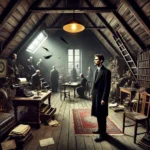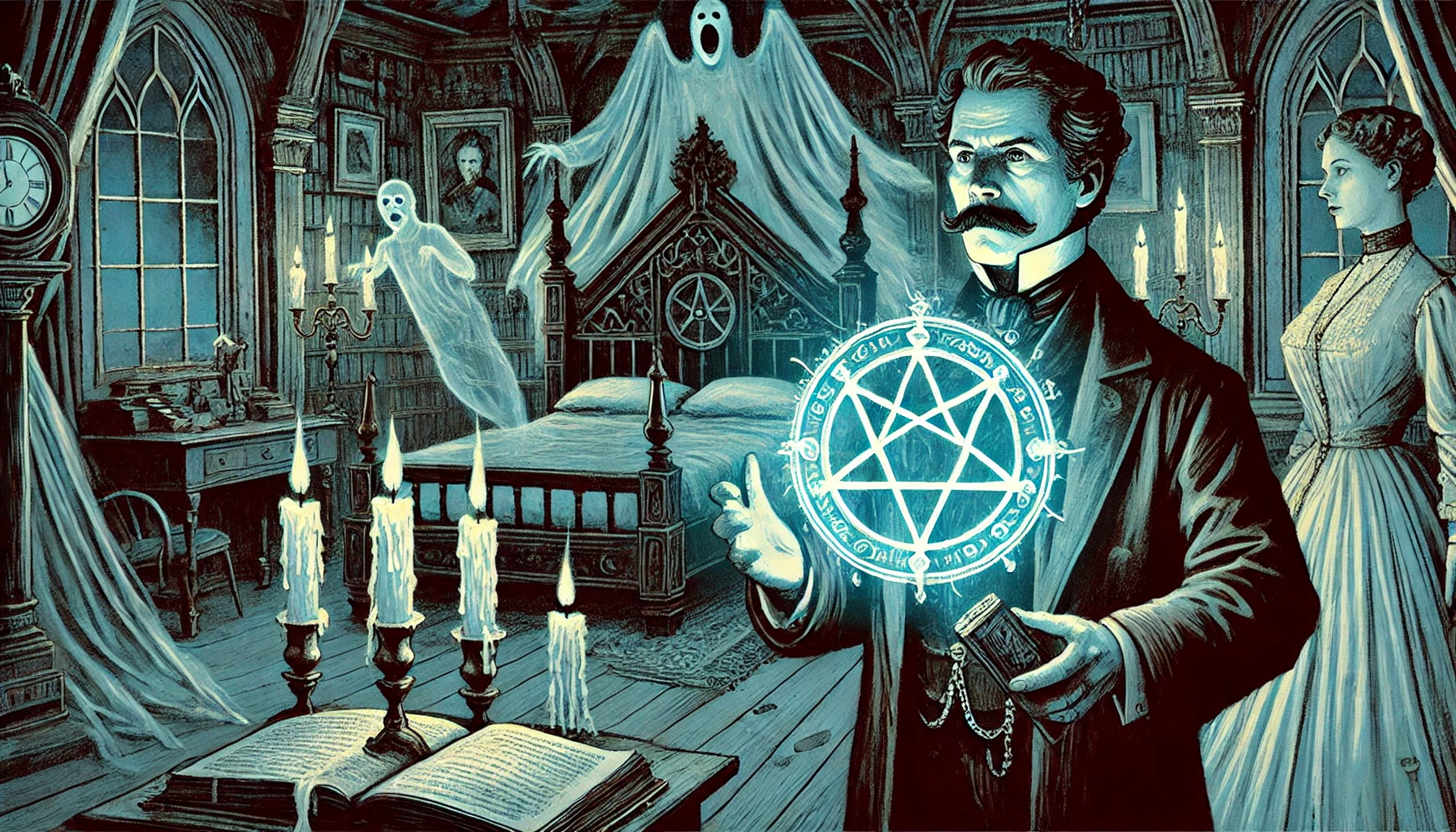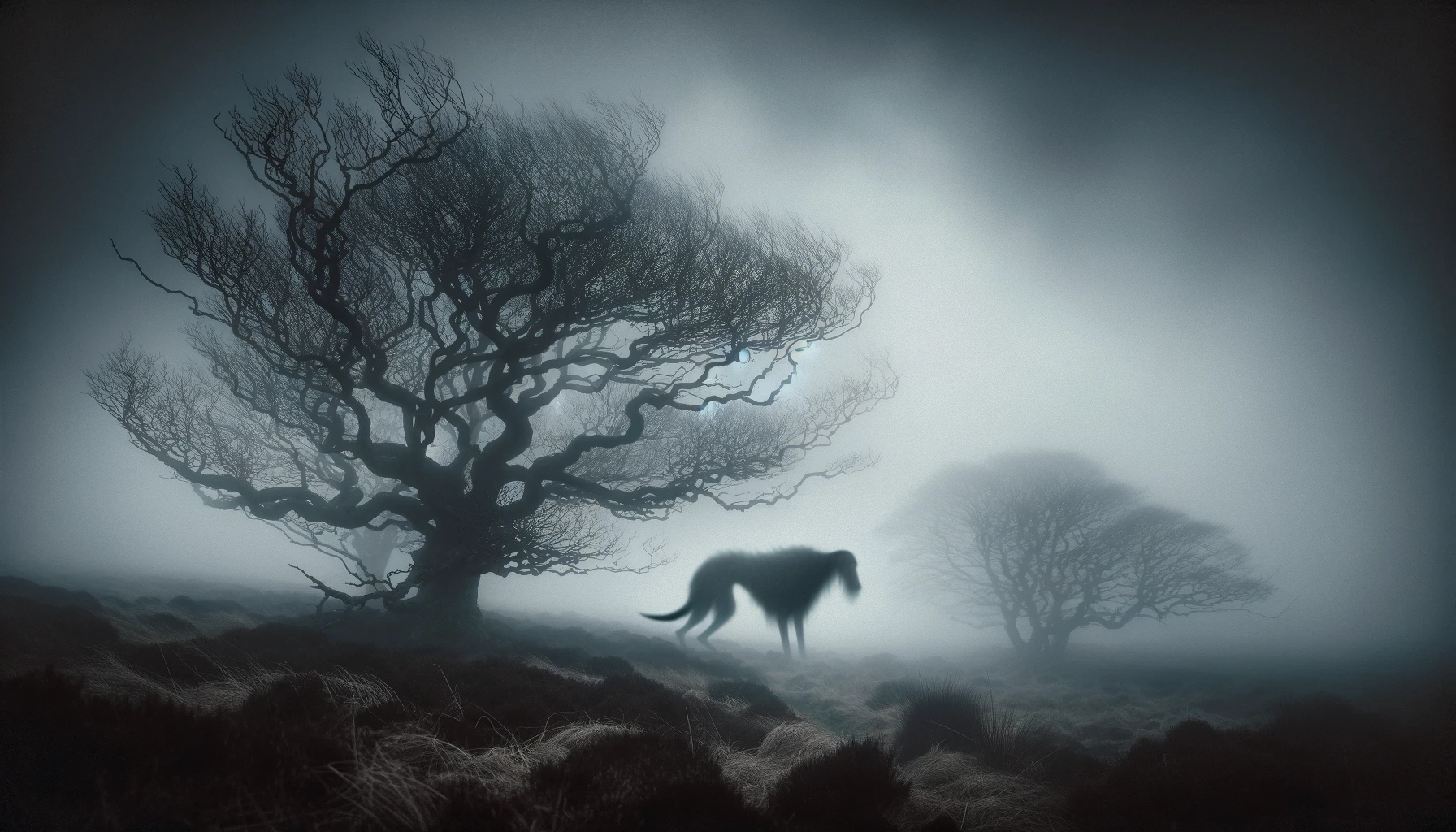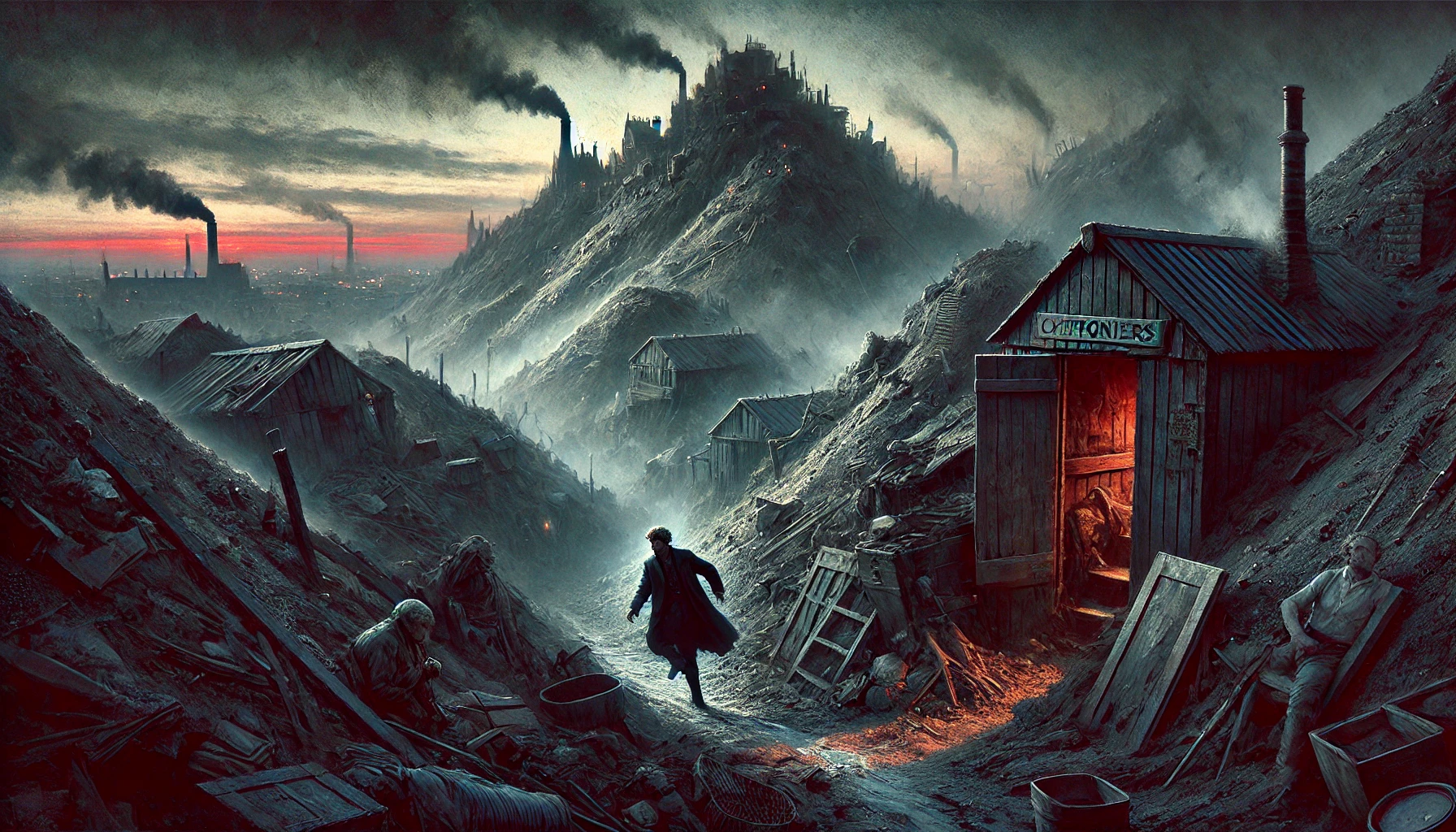The Trial for Murder is a short story by Charles Dickens, first published in 1865. It explores themes of supernatural experiences, guilt, and the complexities of justice. As the narrator is drawn into a murder trial, he begins to experience disturbing visions that seem tied to the crime and the accused. Dickens intertwines psychological and supernatural elements, creating an eerie atmosphere that reflects both societal and personal unease.
Plot Summary
The fog settled heavily over the streets of London as the trial commenced. The courtroom was dimly lit, the gas lamps flickering against the thick air. It was a cold November morning when the man was brought to the bar, standing to face his charges for a murder that had gripped the public’s imagination. The accused stood still, expressionless, while the crowd in the courtroom murmured in anticipation.
Among the many jurors present sat a man whose life had, until that moment, been one of routine. His occupation at a bank had kept him busy, but his days were monotonous, leaving him with an unsettled feeling. When the summons arrived, calling him to serve as a juror in the infamous murder trial, he welcomed it as a break from the tedium of his daily life, unaware of the strange fate that awaited him.
As he sat in the jury box, watching the accused, something peculiar struck him. He had seen this man before. The recognition was immediate, even before a single piece of evidence had been presented. Days earlier, while sitting by his window in Piccadilly, he had watched two men pass by, one with a menacing air and the other pale, waxen, and haunting. The second man, whose ghastly appearance had lingered in his memory, had reappeared in his life in a strange way. That night, while giving instructions to his servant before bed, the juror had seen a figure emerge from the door of his dressing room—a figure whose face was unmistakable. It was the pale man, beckoning to him in silence. Though the vision disappeared as swiftly as it came, the image remained seared in his mind.
Now, as the trial progressed, the courtroom’s dense fog and the low hum of voices around him did little to distract the juror from the chilling connection between his vision and the man on trial. The defendant had been accused of a brutal murder, and the evidence against him was mounting. As each witness took the stand, the case for the prosecution grew stronger. The juror watched with growing unease, sensing that he had become entwined in the events of the murder in ways he could not fully comprehend.
He was not the only one haunted by the crime. As the days of the trial wore on, the figure of the murdered man began to appear more frequently. Though invisible to the others, the apparition’s presence was undeniable to him. On several occasions, the pale man would stand silently behind the more argumentative jurors, beckoning to the foreman, urging him toward a conclusion. The ghostly figure would lean over the shoulders of those involved in the trial, gesturing toward the defendant in moments of contention. The juror knew then that the dead man was seeking justice, and he felt the weight of the responsibility on his shoulders.
Each night, the jurors retired to their lodgings, where they were housed together under the watchful eye of the officer in charge, Mr. Harker. But even within the supposed safety of their quarters, the foreman could not escape the supernatural disturbances. The figure of the murdered man moved among the sleeping jurors, silently inspecting each one. The foreman observed him night after night, unable to shake the deepening dread that filled his heart. What had begun as a simple civic duty had turned into a dark, inescapable ordeal. The figure’s movements were methodical, and though he took no action, his presence was an unspoken reminder of the verdict that awaited.
On the fifth day of the trial, the case reached a pivotal moment. The prosecution produced a miniature portrait of the murdered man, an object that had been missing from the crime scene. The small locket was passed from juror to juror, and when it reached the foreman, something extraordinary occurred. As the foreman held the portrait in his hands, the ghostly figure of the murdered man appeared in the courtroom, as real to him as any living person. The figure took the locket, saying in a low voice, “I was younger then,” before handing it back. The gesture was invisible to the others, but to the foreman, it was a chilling confirmation of the connection between the dead and the living.
As the trial neared its conclusion, the defense’s arguments faltered. The pale figure’s presence grew stronger with each passing day, his silent gestures indicating the impossibility of any explanation other than the defendant’s guilt. At times, the foreman noticed subtle shifts in the courtroom—lawyers who hesitated, witnesses who faltered—as though they, too, sensed something they could not explain. Though none of them acknowledged the ghost, it was clear that the weight of the murdered man’s spirit loomed over the proceedings.
On the final day, the jurors deliberated late into the night. The foreman found himself at odds with three obstinate jurors, who refused to see reason despite the overwhelming evidence. Their senseless arguments dragged on, but the foreman remained resolute, bolstered by the presence of the murdered man, who stood behind the disagreeing jurors, beckoning to the foreman with growing urgency. Finally, they reached a unanimous verdict. The defendant was guilty.
As the verdict was announced in court, the ghost of the murdered man stood opposite the jury box, watching intently. Slowly, he raised a gray veil over his form, covering himself completely. When the foreman blinked, the figure had vanished, leaving only an empty space where he had stood moments before.
The defendant, now pale and shaken, muttered incoherently when asked if he had any final words. He claimed that the foreman had visited him in the night before he was captured, waking him from sleep and placing a noose around his neck. Though the courtroom dismissed his ramblings as the words of a guilty man, the foreman knew the truth. The pale figure, the vision of the murdered man, had haunted both the living and the guilty until justice had been served.
Main Characters
- The Narrator: A bank official who is unexpectedly summoned to serve as the foreman of a jury in a murder trial. His logical, rational mindset is disrupted by supernatural experiences that connect him to the murder and the accused.
- The Murderer: A man on trial for the murder, whose presence and connection to the narrator are unsettling. His guilt is revealed not just through the evidence but also through the narrator’s spectral visions.
- John Derrick: The narrator’s loyal servant, who also becomes entangled in the narrator’s strange experiences, although he seems to be affected indirectly by the narrator’s encounters with the supernatural.
- Mr. Harker: The officer in charge of the jury, an intelligent and polite man who observes the unusual events that occur during the trial, though he is unaware of their supernatural causes.
Theme
- Supernatural and Psychological Tension: The story blurs the line between reality and the supernatural, using the narrator’s visions and premonitions to create a sense of dread. This reflects Dickens’ exploration of how the mind can be haunted by guilt, fear, and the weight of judgment.
- Justice and Morality: The trial serves as a backdrop to explore the moral questions of guilt and punishment. The supernatural elements heighten the sense that justice is not just about legal proceedings but also about deeper, unseen forces at work.
- Isolation and Alienation: The narrator’s experiences isolate him from those around him, even as he becomes more entangled in the trial. His growing connection to the crime and the murderer makes him feel increasingly distant from normal life.
- The Power of the Unseen: The visions the narrator encounters suggest that unseen forces, whether supernatural or psychological, play a significant role in shaping reality. The story hints at the idea that human perception is limited and that deeper truths might remain hidden.
Writing Style and Tone
Dickens’ writing in The Trial for Murder is marked by his characteristic vivid descriptions and the gradual build-up of suspense. His use of first-person narration allows readers to delve deeply into the narrator’s internal turmoil, making the supernatural elements feel personal and immediate. Dickens combines the precision of courtroom drama with eerie, atmospheric descriptions that evoke a sense of dread and inevitability. The prose is detailed and dense, capturing both the mundane details of the trial and the extraordinary events that unfold.
The tone is foreboding, with a gradual shift from the ordinary to the surreal as the narrator becomes more deeply involved in the case. Dickens masterfully uses pacing to create a mounting sense of anxiety, mirroring the narrator’s own descent into uncertainty. This tone contributes to a haunting atmosphere, where the boundaries between reality and the supernatural are continually blurred.
We hope this summary has sparked your interest and would appreciate you following Celsius 233 on social media:
There’s a treasure trove of other fascinating book summaries waiting for you. Check out our collection of stories that inspire, thrill, and provoke thought, just like this one by checking out the Book Shelf or the Library
Remember, while our summaries capture the essence, they can never replace the full experience of reading the book. If this summary intrigued you, consider diving into the complete story – buy the book and immerse yourself in the author’s original work.
If you want to request a book summary, click here.
When Saurabh is not working/watching football/reading books/traveling, you can reach him via Twitter/X, LinkedIn, or Threads
Restart reading!








